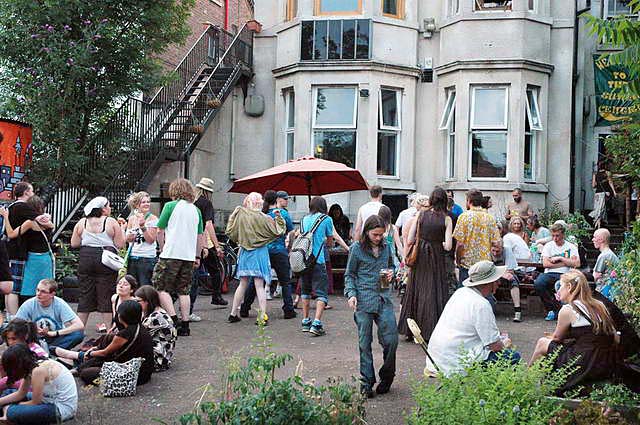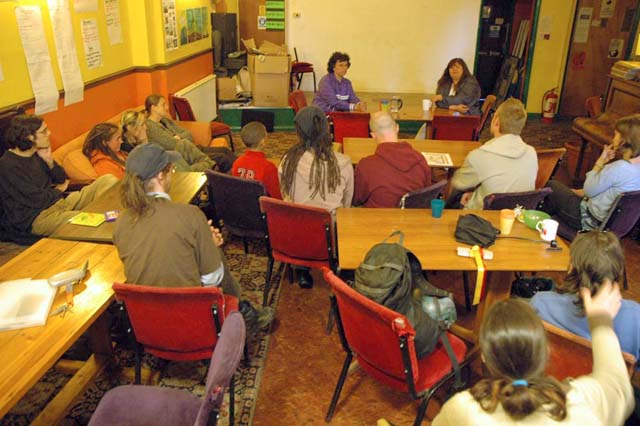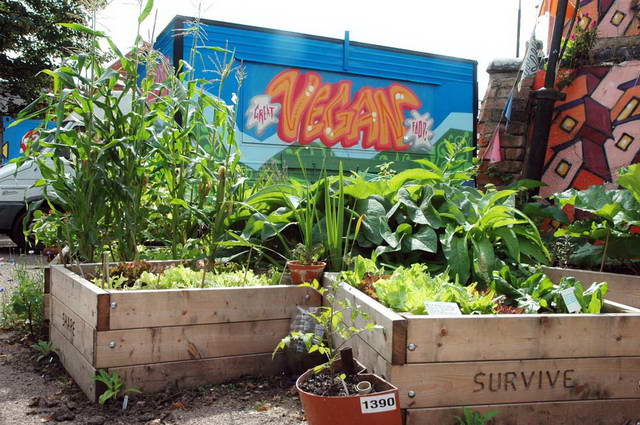It is a legal requirement that caterers should identify all stages of their operation that might involve risks to food hygiene, or to the health and safety of employees or customers. Caterers should implement working practices to minimise such risks.
The main risks associated with Sumac operations are assessed as follows:
Food Hygiene
Sumac volunteers undertake Food Hygiene Training and supervise helpers who have not received formal training.
Close attention is paid to cleanliness of the catering environment and that of the workers..
A ready supply of hot water and cleaning materials is always available from downstairs.
risk-assessment-health-safety-overviewFoods, including dry goods, are generally bought for each event, or rotated by date.
Working practices are designed to operate in a safe, clean and efficient manner.
Fresh foods are prepared in quantities appropriate for the expected level of trade.
Health and Safety
The hobs run on gas & the oven on electric.
Metal pipework is installed wherever possible.
Equipment is inspected by qualified gas / electrical contractors.
Cuts and burns
Crew are instructed in safe handling of knives.
Care is taken with boiling water.
Supplies of blue plasters and burn / scald treatment are available.
Public Safety:
Structures are designed to be safety constructed.
Hot surfaces are positioned away from the public.
Full insurance cover is maintained.
Pest Control
Pests are attracted by easy availability of food
It is intended that nothing will attract them into the food premises or surrounding area.
Food Hygiene Guidelines
The following acts as both advice and as a checklist for kitchen volunteers
Personal hygiene
Store personal clothes/jackets/bags away from cooking areas.
Tie back hair & wear clean clothing.
Cover cuts and sores with a waterproof dressing/plaster.
Wear an apron, clean catering t-shirt or catering jacket.
Wash hands before and after handling food, after breaks, after the toilet.
Encourage others to wash hands before eating.
Do not eat in the kitchen.
Do not sneeze or cough near food.
Do not smoke in the building. Wash hands ofter smoking outside.
Do not work the kitchen if you may have a transmittable disease
Food preparation
Use separate chopping boards for different foods (eg bread, raw veg, salad)
Use clean knives/utensils
Handle raw and cooked food separately using different utensils
Clean as you go
Store utensils and other equipment cleanly and safely
Food temperature and reheating
Keep hot food above 63°C. Reheat to 75°C for 30 seconds before serving.
Keep cold food below 5°C. Check that fridge is between 0°C – 7°C.
Ensure that all food is cooked through before serving, serve piping hot.
Large pans should be stired to check the temperature right through.
Do not reheat more than once and reheat thoroughly.
Surplus food should be given or taken away.
If necessary to chill large amounts, there is a blast chiller downstairs.
Serving food
Provide clean utensils for self serving, different ones for raw and cooked food
Covering and storing food
Cover and secure all opened food packets
Cover prepared food to be served in the near future
Keep all food off the ground
Pest control
Protect open food from flying insects
Check regularly for pests
Surfaces and cleaning
Replace tea towels & hand towels for each event.
Use sanitising spray to food preparation surfaces before use.
Keep surfaces, chopping boards and utensils clean.
Use double sink/bowls for washing and rinsing.
Dry everything in the air (or with clean tea towels).
Waste
Recycle where possible. All food waste can be composted.
Health and Safety
Knives should be carefully stored and carried.
Keep floor clear & clean.
Check the availablility of the First Aid kit.
Fire precautions
Take adequate precautions to prevent spread of fire.
Be aware of fire procedures and location of nearest fire alarm point.
Check availability of the fire blanket or fire extinguishers.
Electrical safety
Check that wiring and plugs are in a safe condition.
PEST CONTROL
We need to ensure that our food handling, preparation and storage practices are designed to minimise any risk of contamination by pests.
Pests are attracted by easy availability of food.
Ensure there is nothing to tempt them into the kitchen or surrounding area.
Keep foods off the ground, ideally above 18”.
Give particular attention to loose and fresh foods, such as vegetables & bakery products.
Keep open foods covered.
Opened packages must be carefully resealed or transferred to sealed containers.
Check for visual signs of contamination, especially vegetables and other fresh foods.
Check that packaging is not damaged, or effected by damp,
eg packaged goods, such as fruit juices, soya milks, grains, tinned goods.
Rotate stock. Take surplus stock away after your event.
Do not store excessive supplies, nor open more than necessary for immediate use.
Keep premises clean.
Immediately clean any spillages or split packages that could result in food debris.
Rubbish bins should be kept clean and be closed with tight fitting lids.
Rubbish should be removed from kitchen as soon as possible.
Food waste should be regularly removed from the kitchen.
Vegetable trimmings and other compostables, should be stored outside.
Keep food storage areas clear and tidy to facilitate ease of cleaning.
Clean floors and work surfaces regularly.
Use appropriate disinfectants and detergents (freely available from Veggies).
Check premises for potential entry points for pests.
Pests can enter through the smallest cracks in the fabric of buildings.
Maintain personal hygiene – pay particular attention to clean hands, hair and clothing.
Report any illness, which could indicate tainted food.
Do not work in food premises or handle food if ill.




